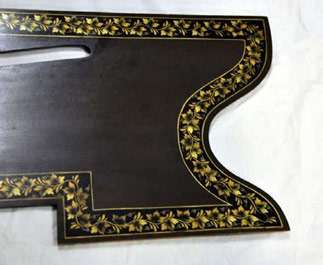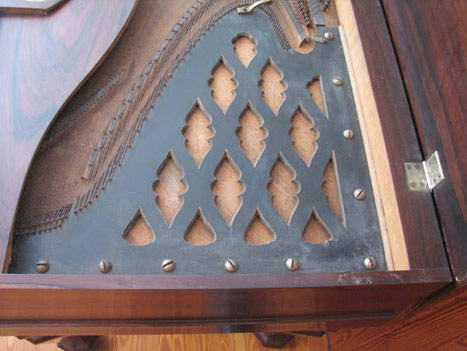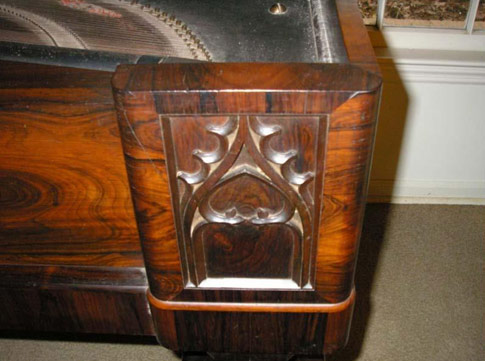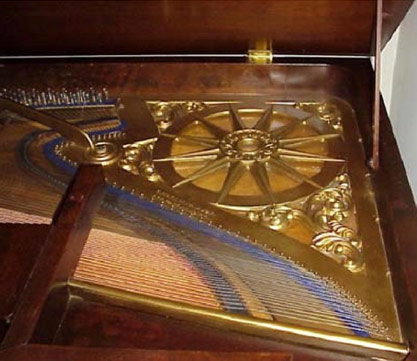Here we see the emergence of the pedestal stand which was employed for all the highest end pianos, and many made by Duncan Phyfe for the trade. Dust boards were decorated in gilt stars and leaf patterns, either on fine mahogany or brightly painted pine or poplar.

In Maryland and Ohio, German immigrants developed their own style of square pianoforte manufacture, often using modified Viennese actions or variations on the English action not seen elsewhere. Below is an example from the shop of Reuss, Cincinnati.

Photo courtesy of Frank Renfrow, Cincinnati Following the introduction of an iron string plate by Broadwood in 1822, Alpheus Babcock emerged with the first full frame metal plate to support the string tension, in 1825. Reaction to iron in the piano was not immediately positive, and it would take 25 years for full iron plates to become relatively common in American squares, but the string plate solved a number of concerns and was rapidly adopted.

A design trend that took hold in America particularly was the Gothic style, and was reflected in piano design in the period 1845-1855, with four fat legs (usually hollow, with hidden recessed castors and fine veneer) and a Gothic arch motif carved on the front panels, as in the Nunns and Clark of ~1848 below.

With iron framing now in the picture, and the heavier strings it can support, as well as the successes in England at expositions and trade exhibits, the American piano industry was roaring. Larger and larger squares popped into existence, moving quickly from the standard 6 octave models to 7 and 7.5 octaves. This was led by Chickering, perhaps the most prominent name in America in the mid century.


|
